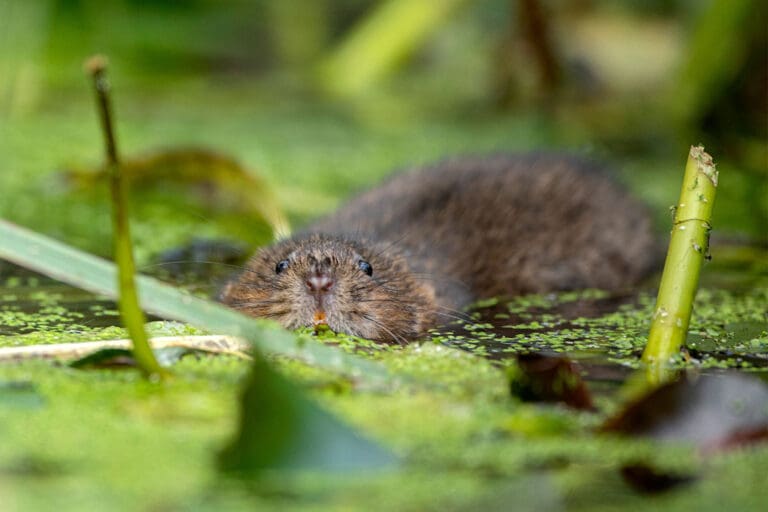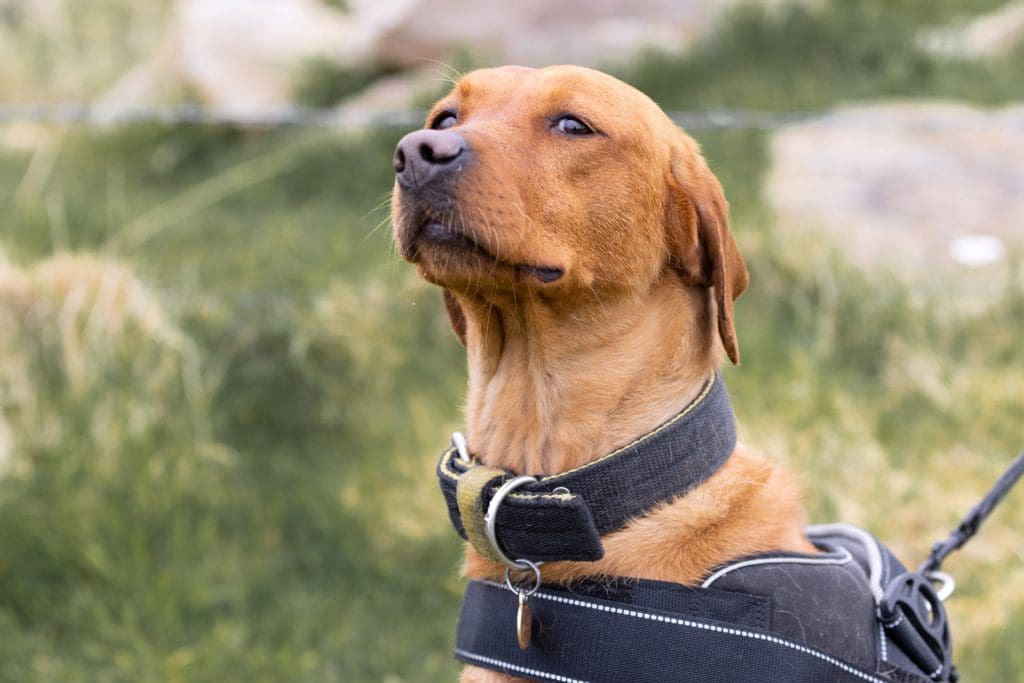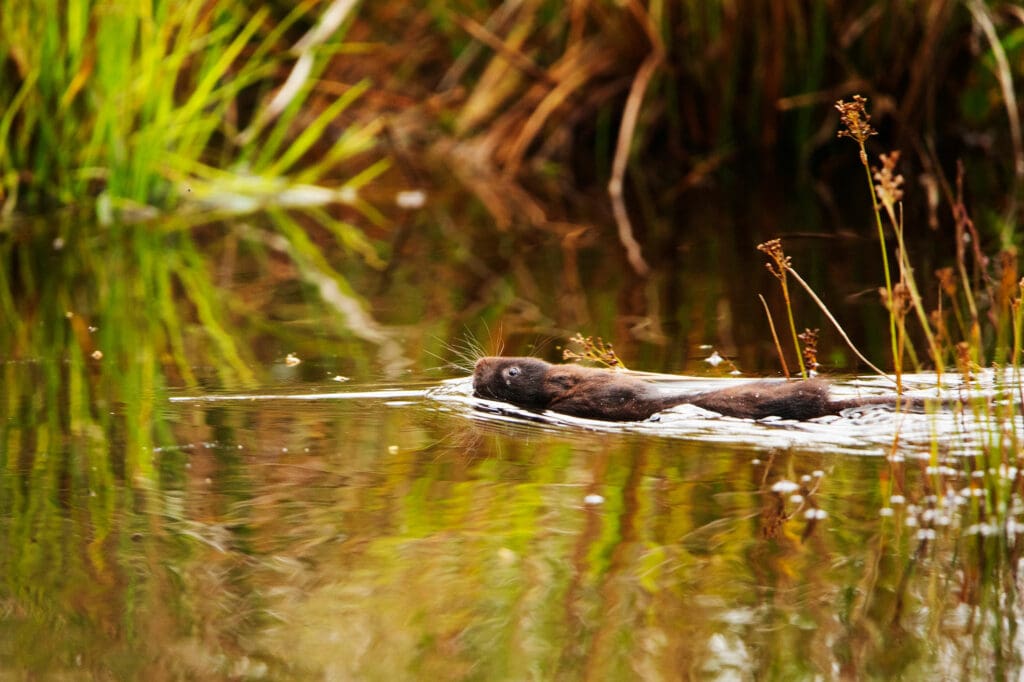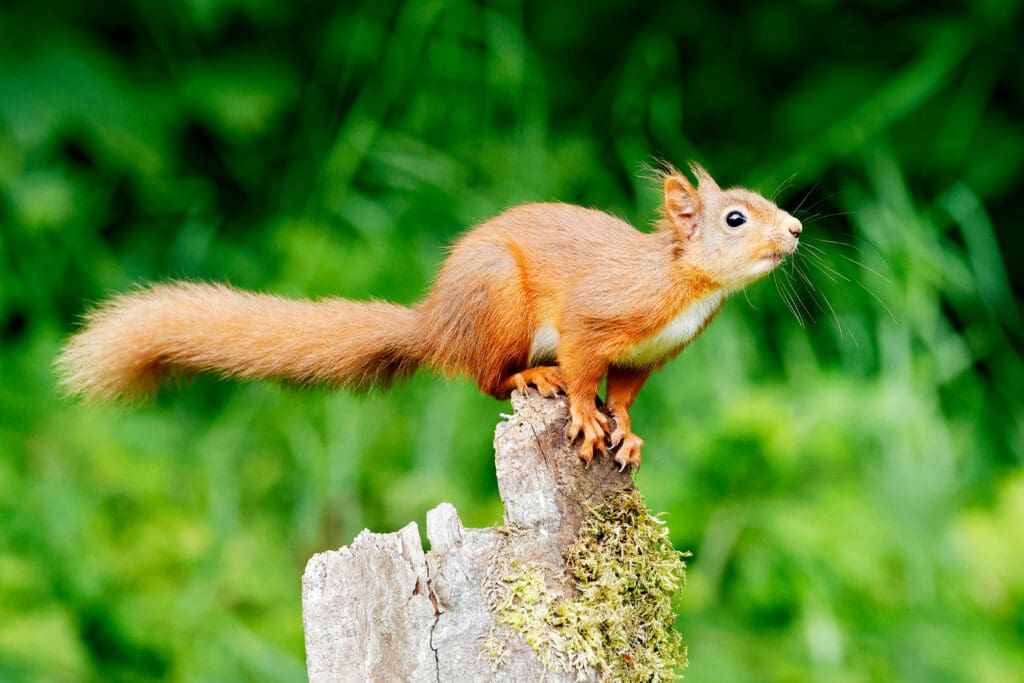Our largest vole should be widespread and common, but habitat loss, pollution and predation by American Mink has removed the Water Vole from 95% of its former habitat. Distinguishable from Brown Rats thanks to their blunt noses, small ears and short, fur-covered tails, Water Voles are found in waterways and wetlands.
Listen for a ‘plop’ as they enter the water and look for riverbank burrow holes and tiny grazed lawns. Where concentrated conservation efforts are in place, these mini ecosystem engineers are showing signs of stabilising and expanding their range.
A hidden camera catches a Water Vole in action. Video: The RSPB

How to help Water Voles
The best way to help support this species is to record your sightings of them. Let the Wildlife Trust know if you see one.

Water Vole. Photo: Ben Andrew (rspb-images.com)
You might also like

Saving species with tracker dogs

Ratty returns to Lake District



